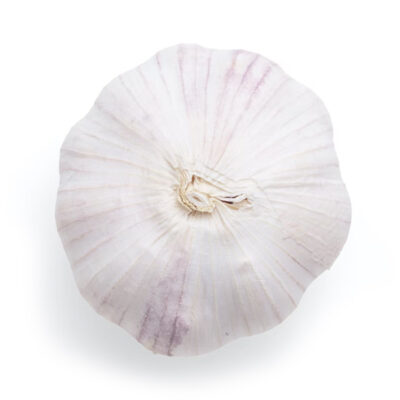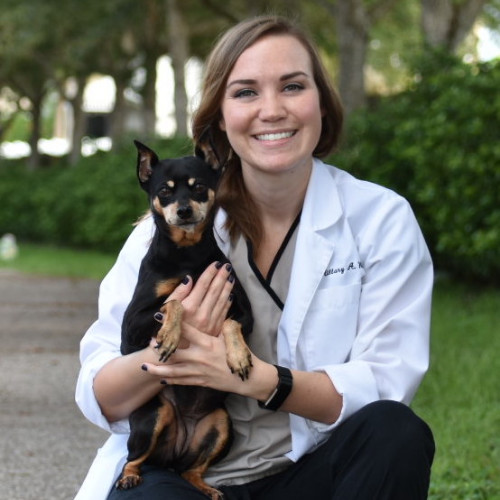No, dogs cannot eat garlic, even in moderation. In small amounts, garlic is less likely to cause problems for dogs. In trace amounts that are found in dog foods or treats, there are some health benefits. However, it is still not recommended that owners regularly feed garlic or garlic seasoned foods to dogs unless there has been a prescribed food, supplement or vet recommendation.

Dangerous: This food is generally considered a serious threat to the health and wellbeing of dogs. Please contact your vet, a veterinary hospital or pet poison control if you suspect your dog has eaten this food recently.
| Food Safety | Dangerous |
|---|---|
| Dangerous Serving | 3 to 6 grams per kg of body weight |
| Poisoning Symptoms | Vomiting, diarrhea, difficulty breathing, pale gums, rapid heart rate |
| Severe Poisoning | Anemia, death |
How Much Garlic is Harmful to Dogs?
A 20 pound dog can get garlic poisoning1 from as little as 30 grams of garlic, or 1 ounce. The average garlic clove weighs between 3 and 7 grams so a typical dog may not get poisoned from a single clove, however every dog is different and symptoms can continue to develop over several days. It’s important to monitor dogs who have eaten very small amounts because on occasion dogs can get very sick.
Is Garlic Poisonous to Dogs?
Garlic is a member of the allium family, a genus of perennial plants that include onions, chives, leeks, shallots, and scallions. All the foods in this family contain sulfur-containing oxidants that are dangerous to dogs and classified as toxins. These compounds can cause red blood cells to burst, resulting in severe anemia as well as diarrhea and abdominal pain.
What To Do If Your Dog Eats Garlic
If your dog ingested garlic, try to estimate how much garlic your dog could have eaten and contact the Pet Poison Helpline or your local veterinarian right away. Garlic poisoning can in some cases be fatal in dogs and a blood transfusion might be required to repair their red blood cells since the toxicity causes anemia. Quick treatment is key to survival.
Here are the following symptoms to look for in dogs that are experiencing toxicity due to garlic poisoning:
- Abdominal pain
- Lack of energy & general weakness
- Diarrhea
- Vomiting
- Dark or bloody urine
- Jaundice (discoloration of the eyes and yellowish skin)
- Pale gums
- Rapid heart rate
- Increased rate of breathing
Garlic Alternatives for Dogs
It might be tempting to offer garlic to your dog since it has numerous health benefits for humans. However, due to it being toxic to dogs this is not recommended. Instead, try offering fresh fruits and vegetables that are safe for dogs. These will help supply them with antioxidants and health benefits while avoiding possible toxic effects.
Citations
Can You Give your dog fruit? Doggy Nutrition. (2021, Oct 7).
https://www.dogs.com/apples-example
Frequently Asked Questions About Dogs Eating Garlic
-
It is possible for dogs to die from eating garlic. This is more likely to occur if large amounts are eaten and treatment is not started right away.
-
Garlic is generally added to dog food as a flavor enhancer, but is present in such small quantities that it usually will not cause an issue. The doses are carefully chosen and serving sizes need to be followed in order for this food to be a benefit and not a poison.
-
No, dogs should not eat garlic bread. It’s likely the seasonings are below the poison threshold but it’s not recommended that any serving of garlic bread be fed to dogs.
-
No, it’s not recommended that dogs eat foods seasoned with garlic powder as it is a more concentrated and toxic form of garlic.
-
No, it’s not recommended that dogs eat foods seasoned with garlic salt.
